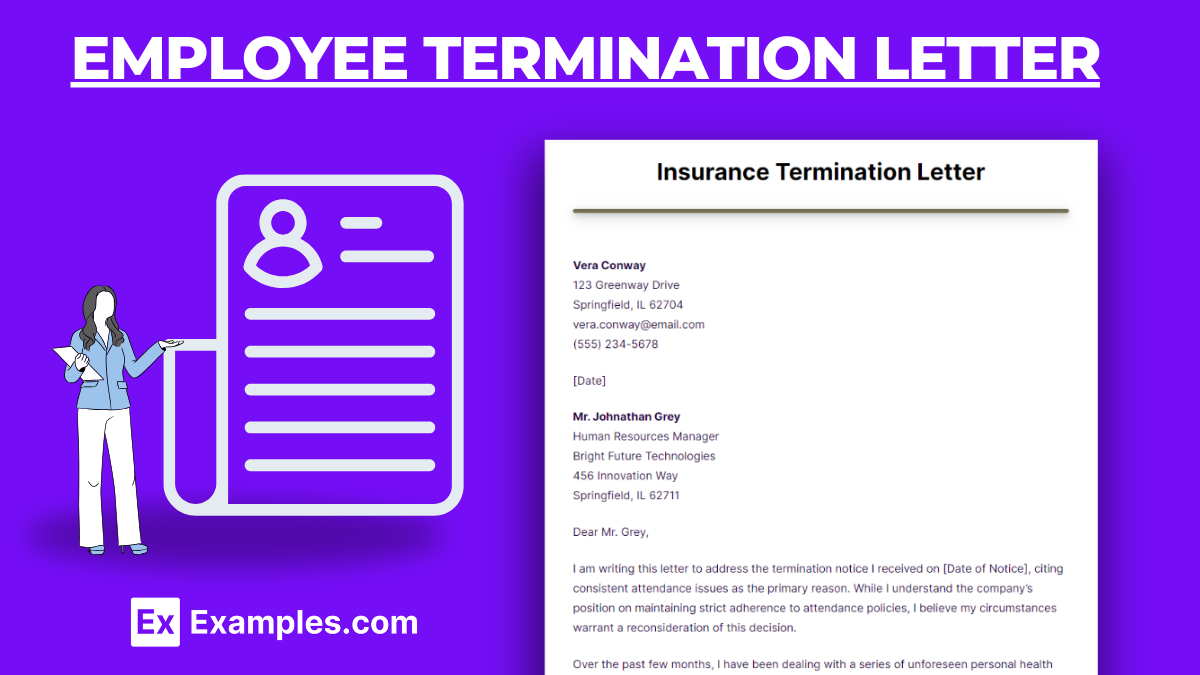17+ Employee Termination Letter Examples to Download
An employment termination letter will always be shocking, otherwise expected. Most, if not all, employees do not want to be put in the position where they will be terminated by their employers especially if they are unaware of the measures in which the decision has been based and made. Businesses should already expect the frustration that employees can showcase if the termination will be announced.
However, emotional responses can be lessened if a proper termination letter will first be given to the employee before proceeding to the implementation of the termination procedures. Make sure that you will follow a formal letter format when creating the employee termination letter that will be used by your business. Browse through the downloadable examples of termination letter templates in this post so you can have references in developing the layout and format of your company’s own employee termination letter.
What is Employee Termination Letter?
An Employee Termination Letter is a formal document issued by an employer to an employee to notify them of the end of their employment with the company. This letter serves as an official record of dismissal and is an essential part of the termination process. It provides clear documentation that can help protect both the employer and the employee in case of any future disputes regarding the termination.
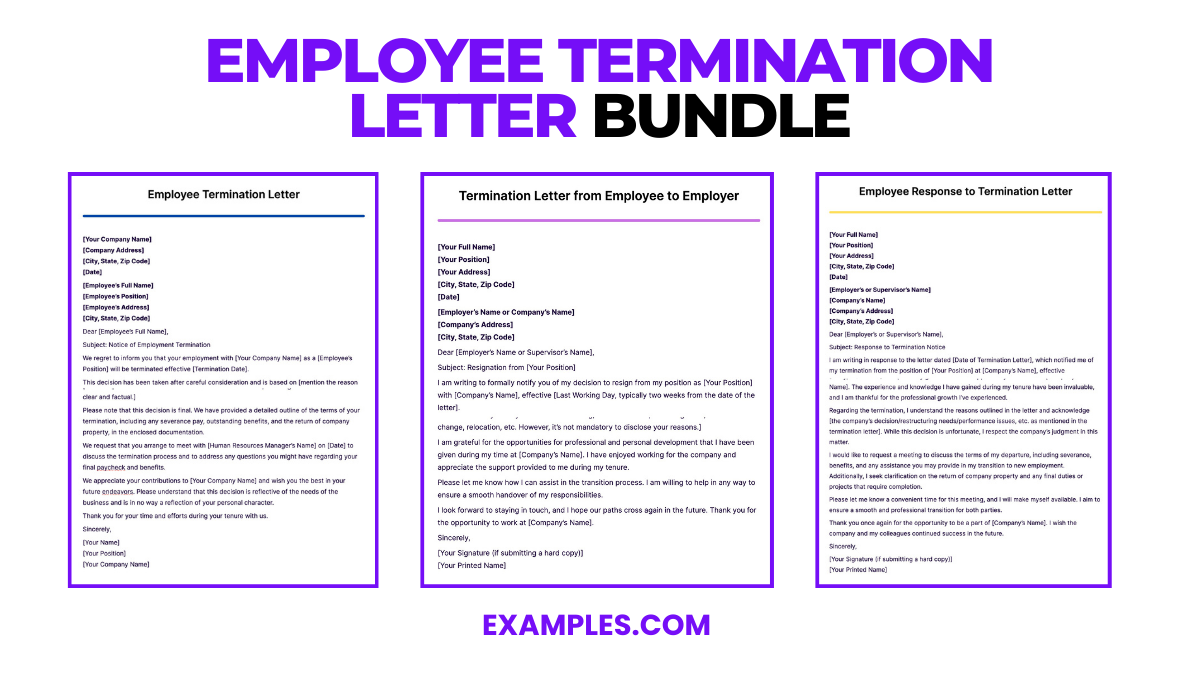
Download Employee Termination Letter Bundle
How to Write an Employee Termination Letter
Writing an employee termination letter is a critical process that requires attention to detail, clarity, and a respectful tone. This guide outlines the steps and key elements to include in a termination letter, ensuring that the process is handled professionally.
1. Start with Company Letterhead
Begin the letter on your company letterhead to formalize the communication. This includes the company’s name, address, and the date the letter is written.
2. Address the Employee Directly
Address the letter to the employee with their full name and any professional titles or positions. Ensure that the address and contact information are correct.
3. State the Purpose of the Letter
Open with a clear statement that the letter is to notify the employee of their termination. It’s important to be direct yet respectful.
Example: “We regret to inform you that your employment with [Company Name] will be terminated as of [Date].”
4. Explain the Reason for Termination
Provide a concise and clear explanation of the reasons leading to the decision. Whether it’s due to performance issues, redundancy, or misconduct, it’s important to be factual and avoid unnecessary details that could create legal issues.
5. Detail Any Severance Package or Final Pay
If applicable, outline any severance pay, benefits continuation, or compensation for unused vacation days. Clearly state any conditions or calculations used to determine these amounts.
6. Outline the Return of Company Property
List any company property the employee is expected to return, such as keys, equipment, or documents, and specify the deadline and procedure for returning these items.
7. Mention Final Paycheck Details
Inform the employee about when and how they will receive their final paycheck. Include any relevant details about deductions or adjustments.
8. Provide Information on Benefits and COBRA
Explain how the termination affects their benefits. If applicable, provide information on the Consolidated Omnibus Budget Reconciliation Act (COBRA) for continuing health insurance coverage.
9. Offer Resources for Transition
If your company provides resources such as outplacement services or support in finding new employment, mention these in the letter.
10. Keep the Tone Professional and Respectful
Throughout the letter, maintain a tone that is professional, courteous, and respectful, regardless of the circumstances leading to termination.
11. Include a Statement on Confidentiality
If applicable, remind the employee of any confidentiality agreements or post-employment obligations.
12. Provide Contact Information for Further Questions
Offer a point of contact for the employee to reach out to with any questions or concerns regarding their termination, final paycheck, or benefits.
13. Close with a Statement of Regret
Conclude the letter by expressing regret over the situation and wishing the employee well in their future endeavors.
14. Sign the Letter
The letter should be signed by a manager or someone in a higher position within the company. Include the name, title, and contact information of the person responsible for the termination process.
15. Keep a Copy for Company Records
Ensure that a copy of the termination letter is kept in the employee’s personnel file for future reference.
Why Write a Termination Letter?
Writing a termination letter is an essential step in the employee dismissal process for several reasons. It serves not only as a formal notification of the end of an employment relationship but also as a document that can help protect the employer against potential legal issues. Below, we delve into the key reasons why writing a termination letter is crucial:
Formal Notification
- Clarity and Confirmation: A termination letter provides clear and formal communication to the employee that their employment is ending. It ensures there is no ambiguity about the termination, its terms, and its effective date.
- Record of Decision: It acts as an official record that the decision to terminate the employment was communicated to the employee, which can be important in situations where there is a dispute about whether the employee was properly notified.
Legal Protection
- Documentation for Disputes: The letter can serve as a crucial piece of documentation in case of any legal challenges or disputes arising from the termination. It can show that the employer followed proper procedures and acted in accordance with the law and company policy.
- Evidence of Reason for Termination: Including the reason for termination in the letter (if appropriate and advised by legal counsel) can help defend against wrongful termination claims by providing evidence that the termination was for a legitimate, non-discriminatory reason.
Professionalism and Respect
- Professional Closure: Providing a termination letter respects the professional relationship between the employer and employee. It offers a formal conclusion to the employment period and can help maintain a professional tone, even in difficult circumstances.
- Guidance for Next Steps: The letter can include information about final pay, benefits continuation, return of company property, and confidentiality obligations, guiding the employee on the next steps following their departure.
Continuity and Transition
- Clear Transition: For the employer, issuing a termination letter helps manage the transition of the departing employee’s responsibilities, ensuring a smoother handover of duties and minimizing disruption to the organization.
- Reference for Future Employment: While not the primary purpose, a termination letter that outlines the contributions and conduct of the employee in a neutral or positive manner can sometimes assist the employee in their future job search, depending on the circumstances of the termination.
Maintains a Record for Future Reference
- The termination letter is kept in the employee’s personnel file and can serve as a reference for future employment verifications. It ensures that the company maintains a consistent and accurate employment history.
Employee Termination Letter Format
Below is a structured format for an Employee Termination Letter, designed to convey the necessary information in a professional and respectful manner.
[Company Letterhead]
[Date]
[Employee’s Name]
[Employee’s Address]
[City, State, Zip Code]Dear [Employee’s Name],
Notice of Termination
This letter serves as formal notice of your employment termination with [Company Name], effective [Termination Date]. After careful consideration, we have decided to terminate your employment due to [brief reason for termination, e.g., “restructuring within the company” or “performance concerns”].
Details of Your Final Paycheck
Your final paycheck, including compensation for unused leave and any other owed earnings, will be provided on [Date], as per our company’s payroll policy.
Severance Package (If Applicable)
[Detail any severance package, benefits, or additional support offered, including how and when these will be provided.]
Return of Company Property
Please return all company property, such as keys, devices, and documents, by [Return Date]. Failure to return company property may result in a delay of your final paycheck or deductions for the cost of the items.
Benefits and Insurance
Your health benefits will remain active until [End Date]. Information regarding COBRA continuation coverage will be sent to you separately.
Outplacement Services (If Applicable)
[If applicable, include information about any outplacement services or support provided to assist in their job search.]
Acknowledgment of Confidentiality Agreement
We remind you of your obligations under the confidentiality agreement signed at the commencement of your employment, which remains in effect post-termination.
Further Assistance
Should you have any questions about your termination, final paycheck, or benefits, please contact [HR Contact Name] at [HR Contact Information].
Conclusion
We regret that we have reached this decision and wish to thank you for your contributions to [Company Name]. We wish you all the best in your future endeavors.
Sincerely,
[Your Name]
[Your Position]
[Company Name]
[Contact Information]
15+Employee Termination Letter Samples
- Termination of Services Letter
- Lawyer Termination Letter
- Amazon Termination Letter
- At will Termination Letter
- Patient Termination Letter
- Walmart Termination Letter
- Termination Appeal Letter
- Attendance Termination Letter
- Insurance Termination Letter
- Therapy Termination Letter
- Client Termination Letter
- Attorney Termination Letter
- Termination Letter for Attendnance
- Proof of Termination Letter
- Termination with Cause Letter
- Patient Initiated Termination of Care Letter
- Termination Letter for Insubordination
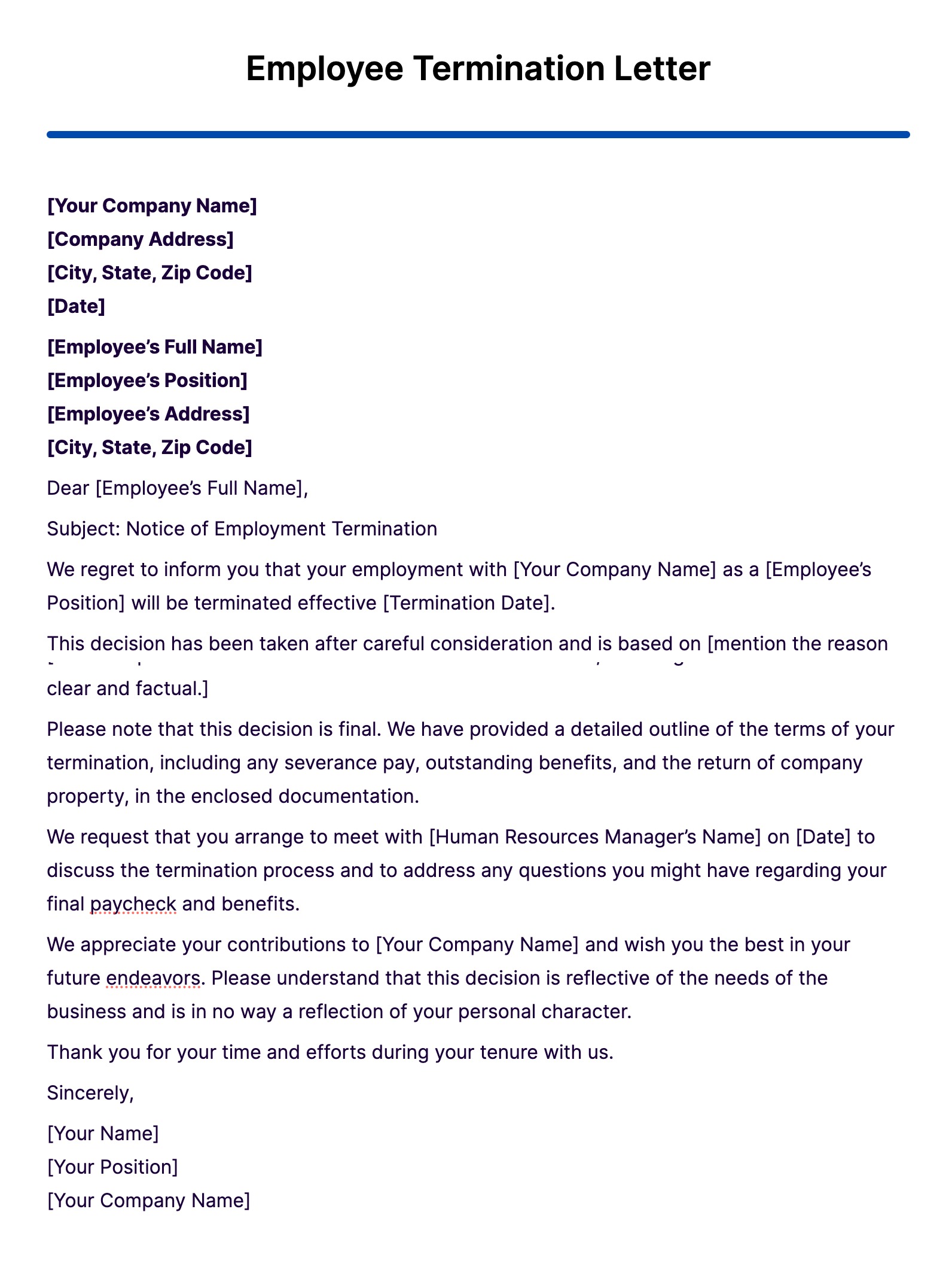
Termination Letter from Employee to Employer
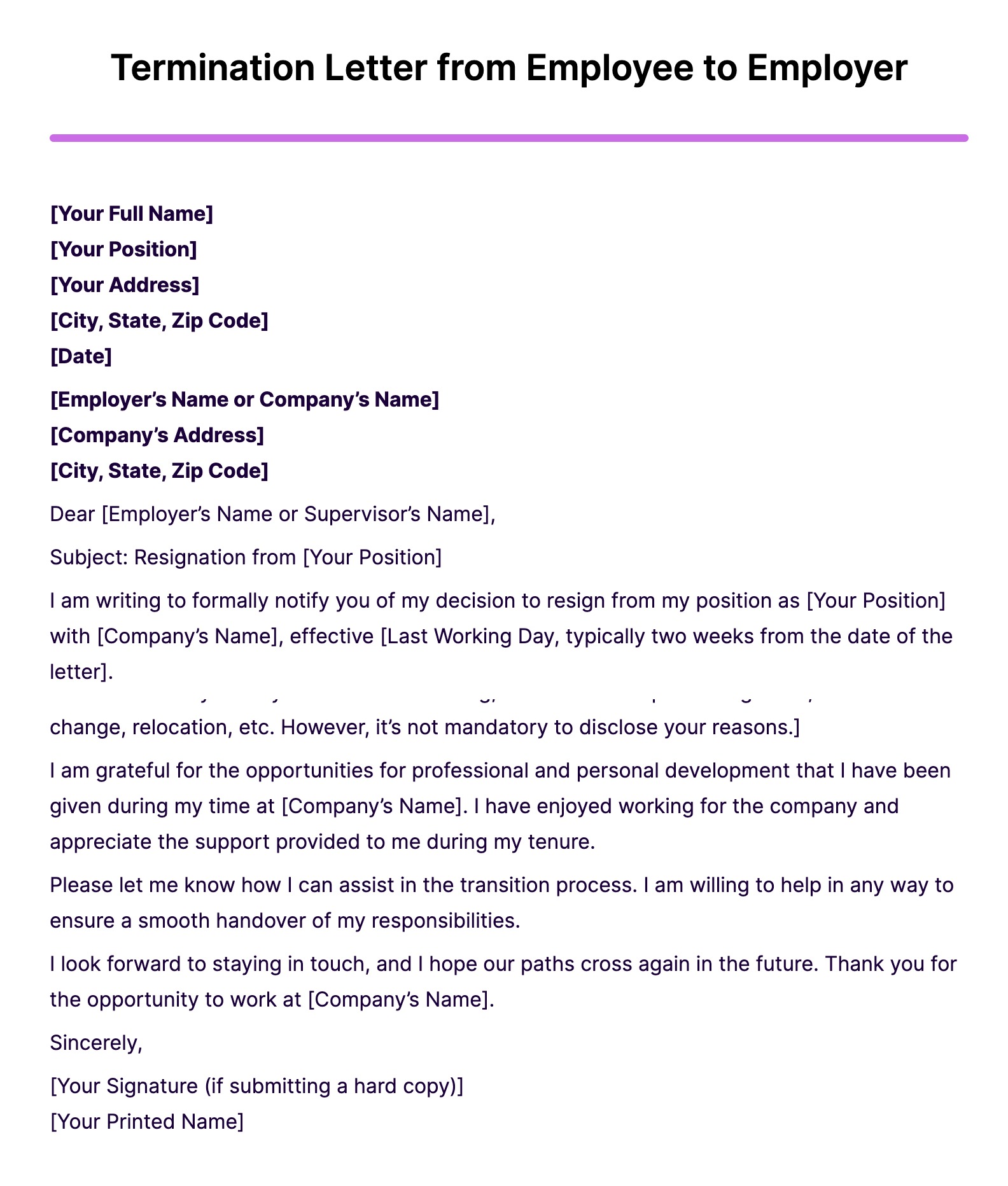
Employee Response to Termination Letter
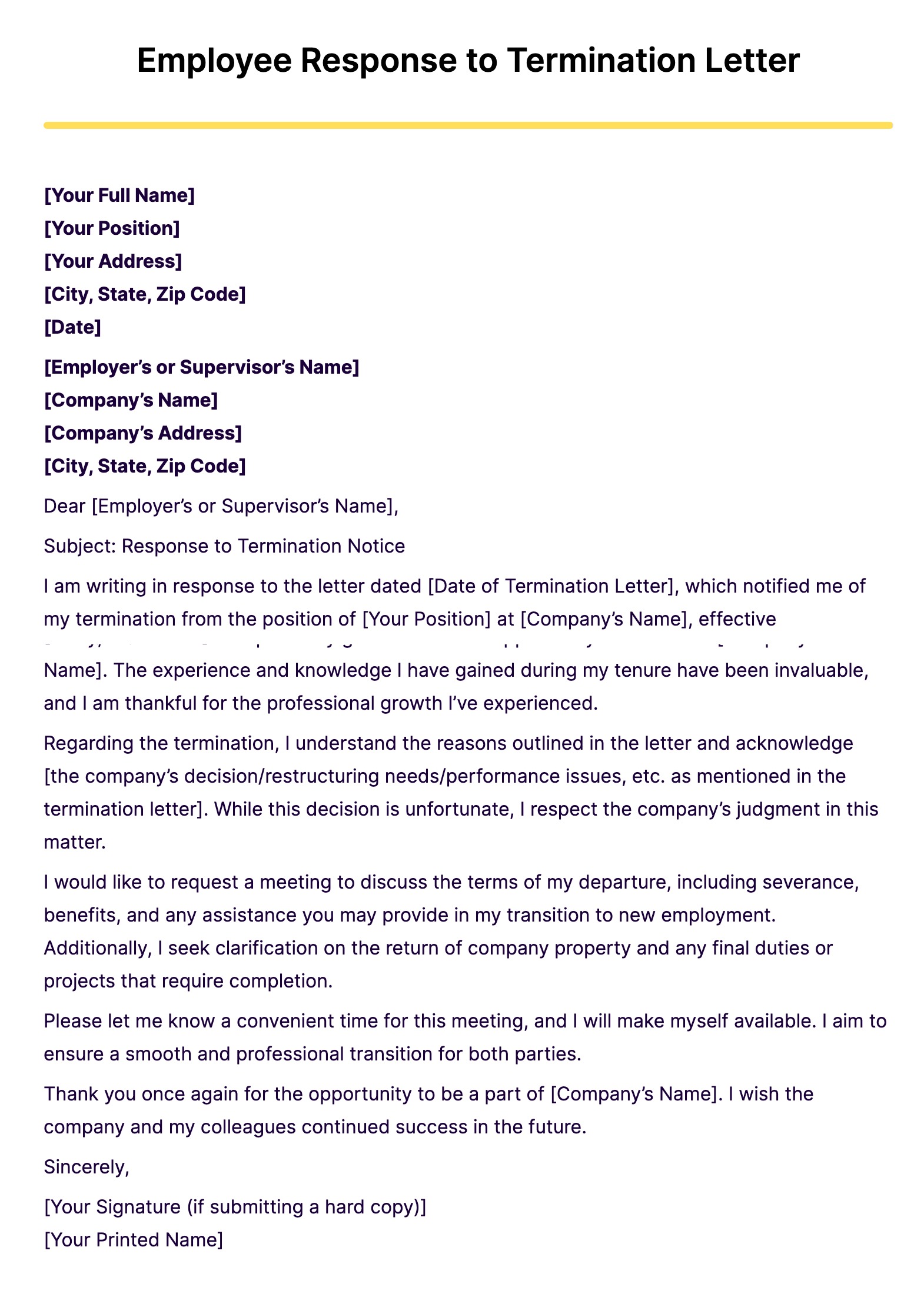
Employee Termination Letter Template
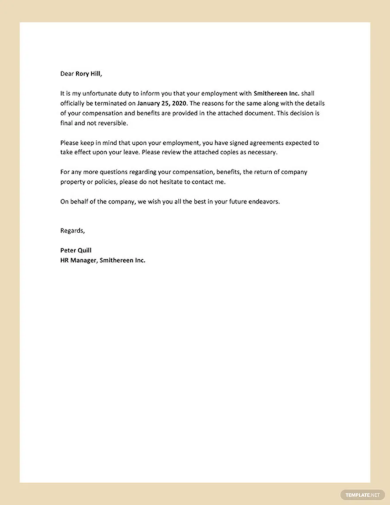
Free Employee Termination Letter Due To Poor Performance Template
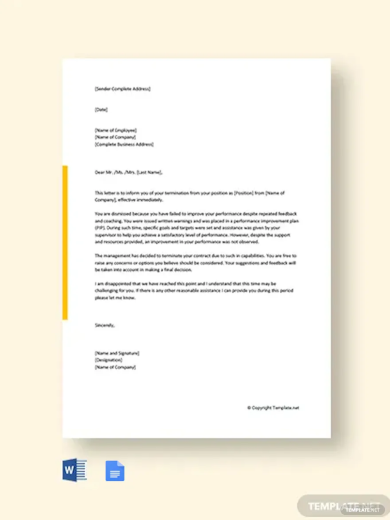
Restaurant Employee Termination Letter Template
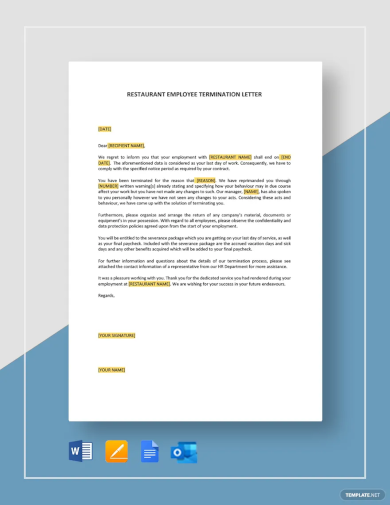
Free Sample Employee Termination Letter Template

Employee Termination Acknowledgement Letter Template

Free Basic Termination Letter to Employee Template
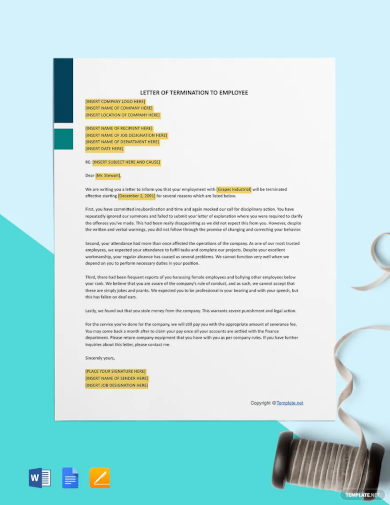
Free Termination Acceptance Letter by employee Template
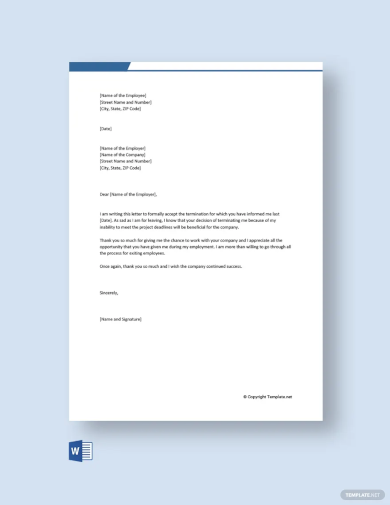
Free Letter To Employee For Notice Of Termination Template
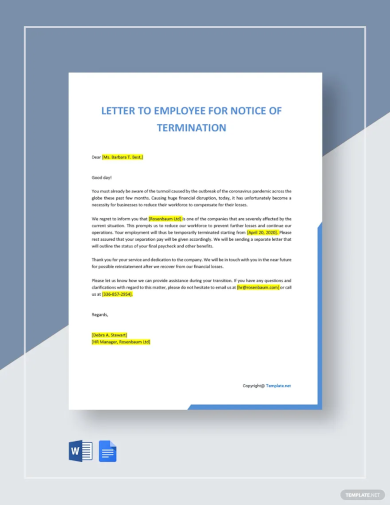
End of Employment/ Employee Termination Letter Guide

Basic Employee Termination Letter
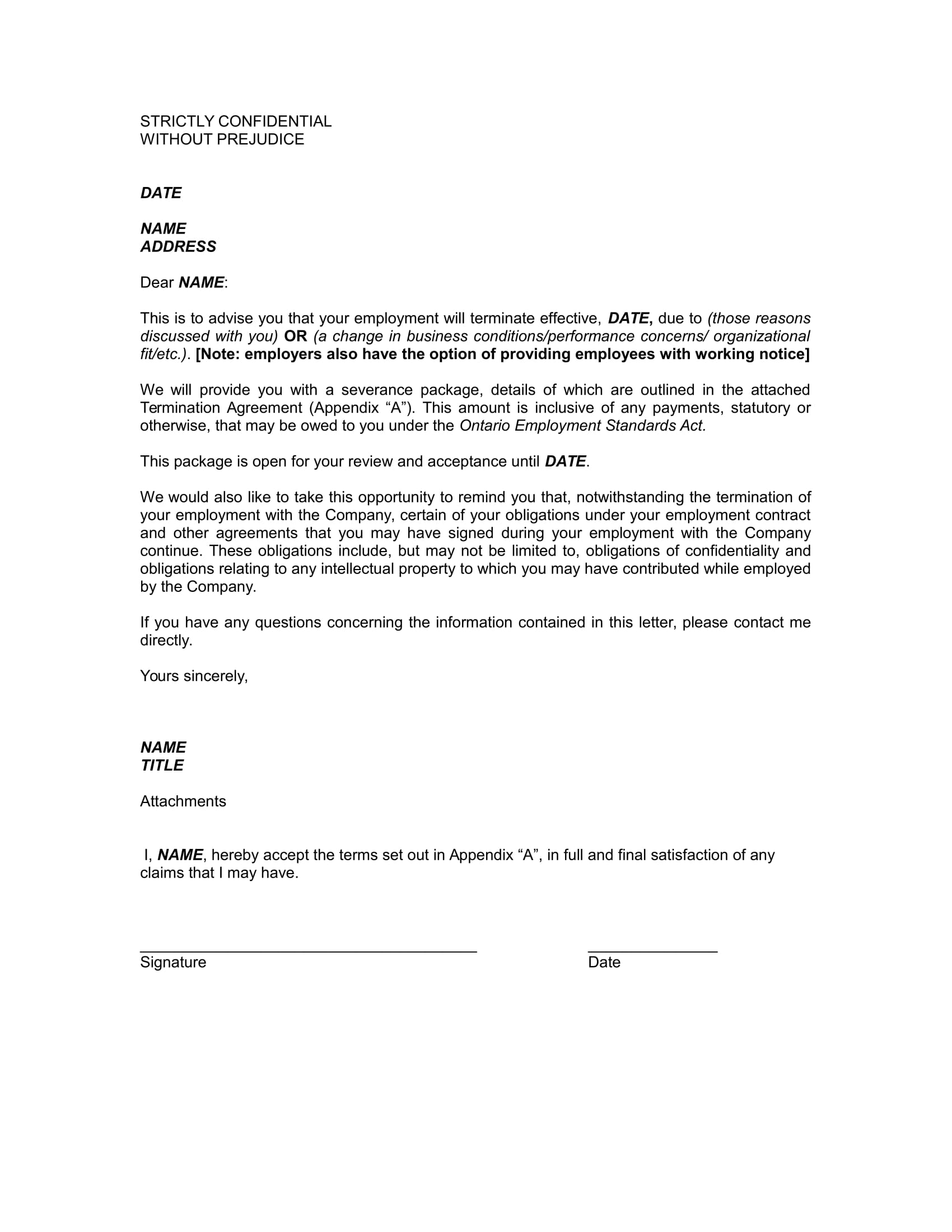
Letter of Termination of Employment With Notice
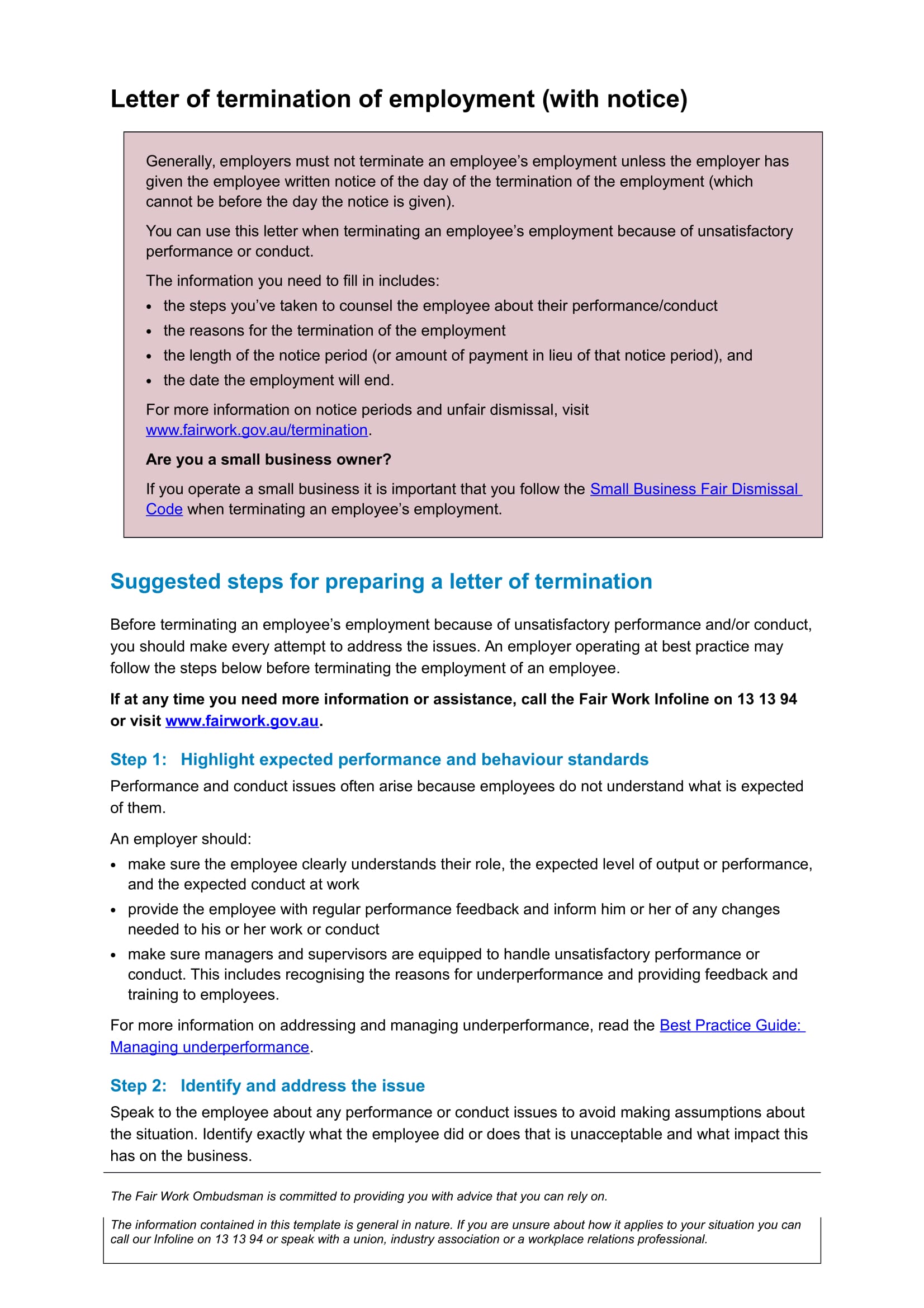
Model Letter for Use in Employment Termination
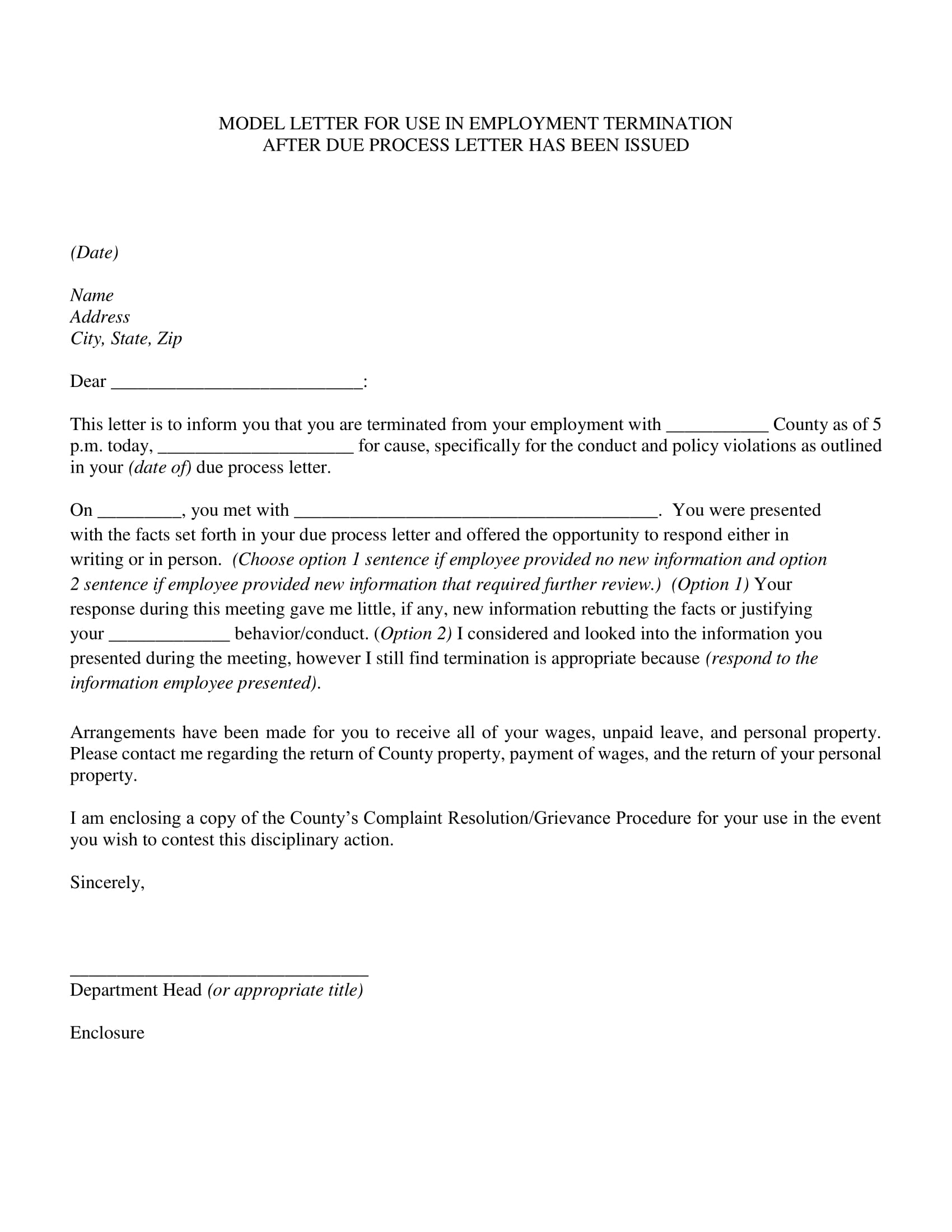
Employee Letter Termination – Template and Guide
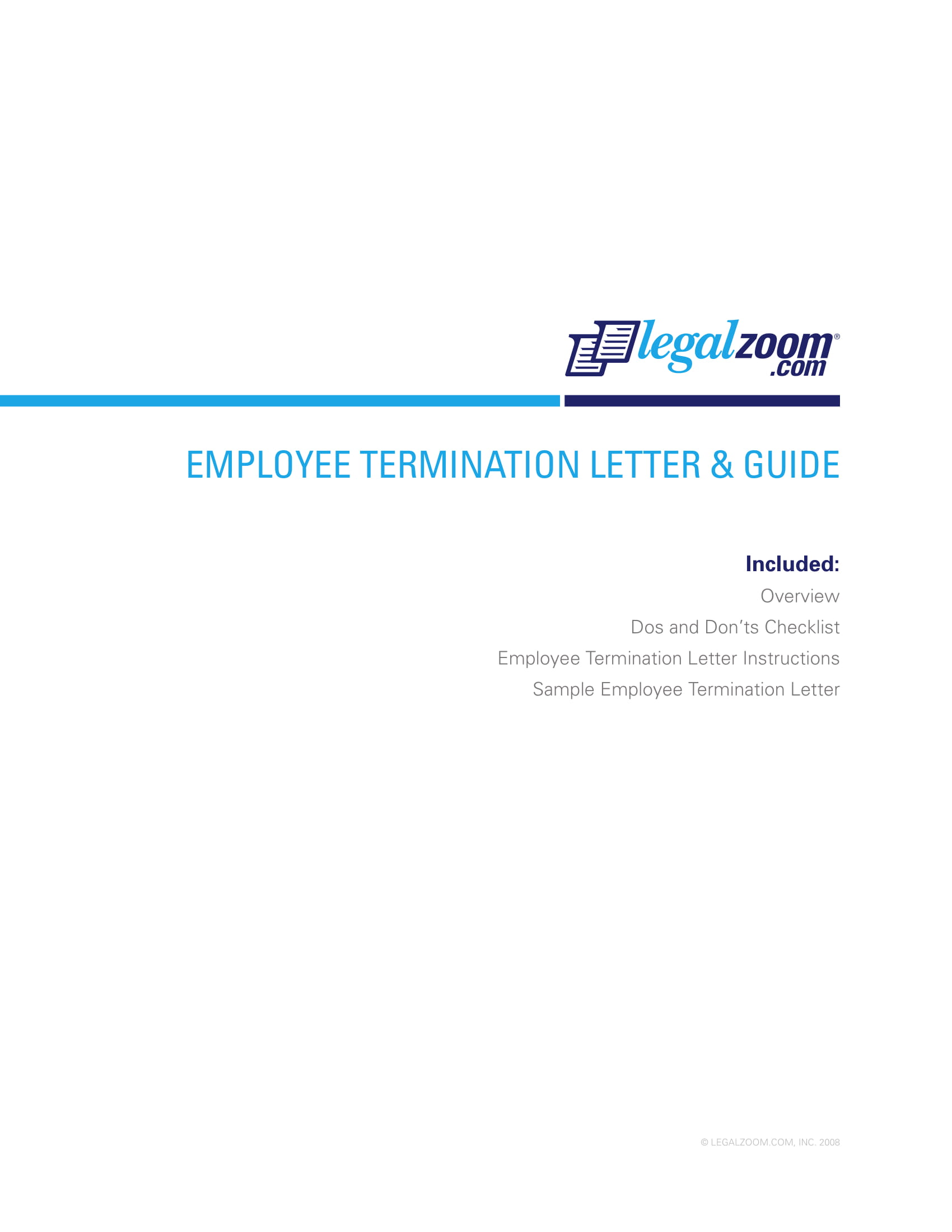
Performance Management Documentation in a Termination Letter
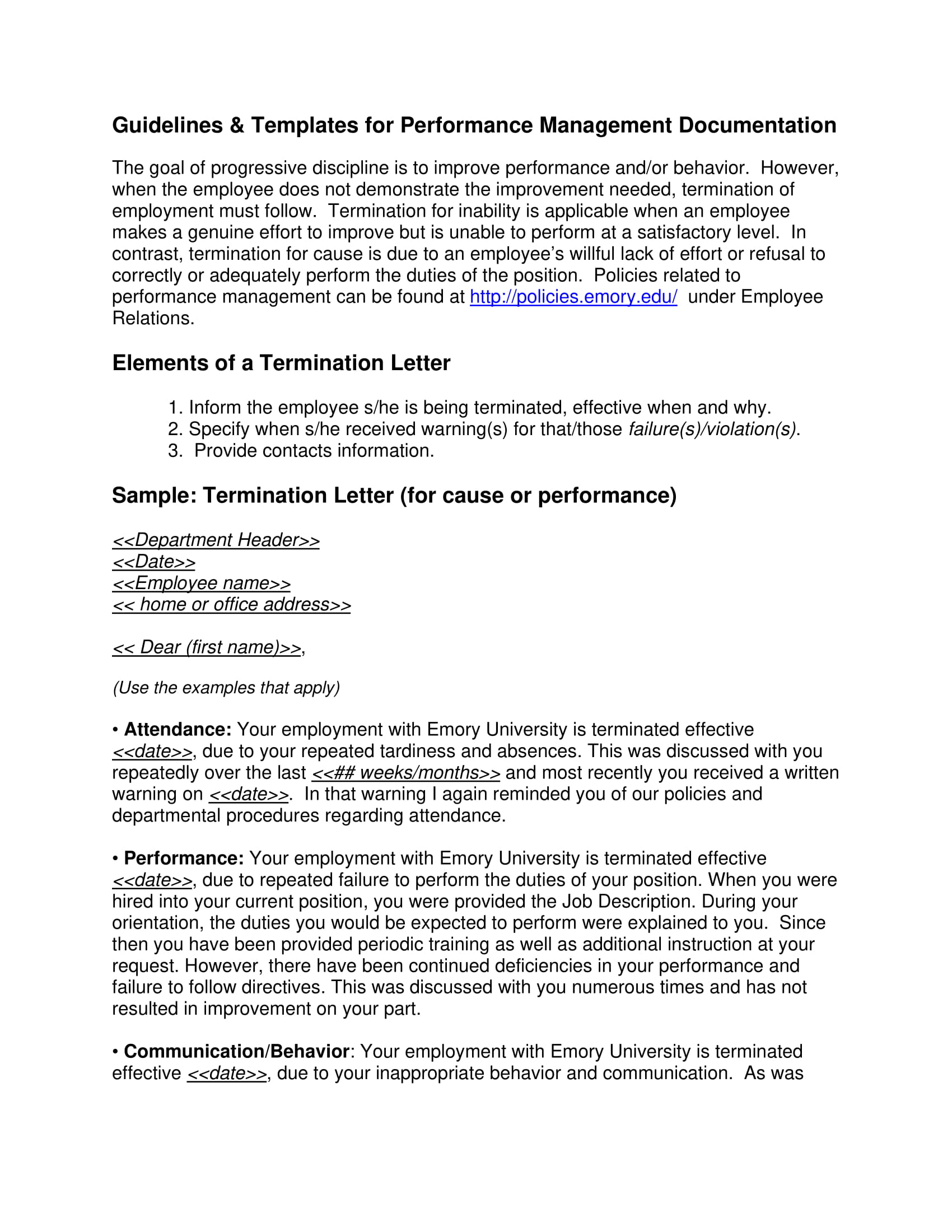
Sample Termination Notification Letter Template
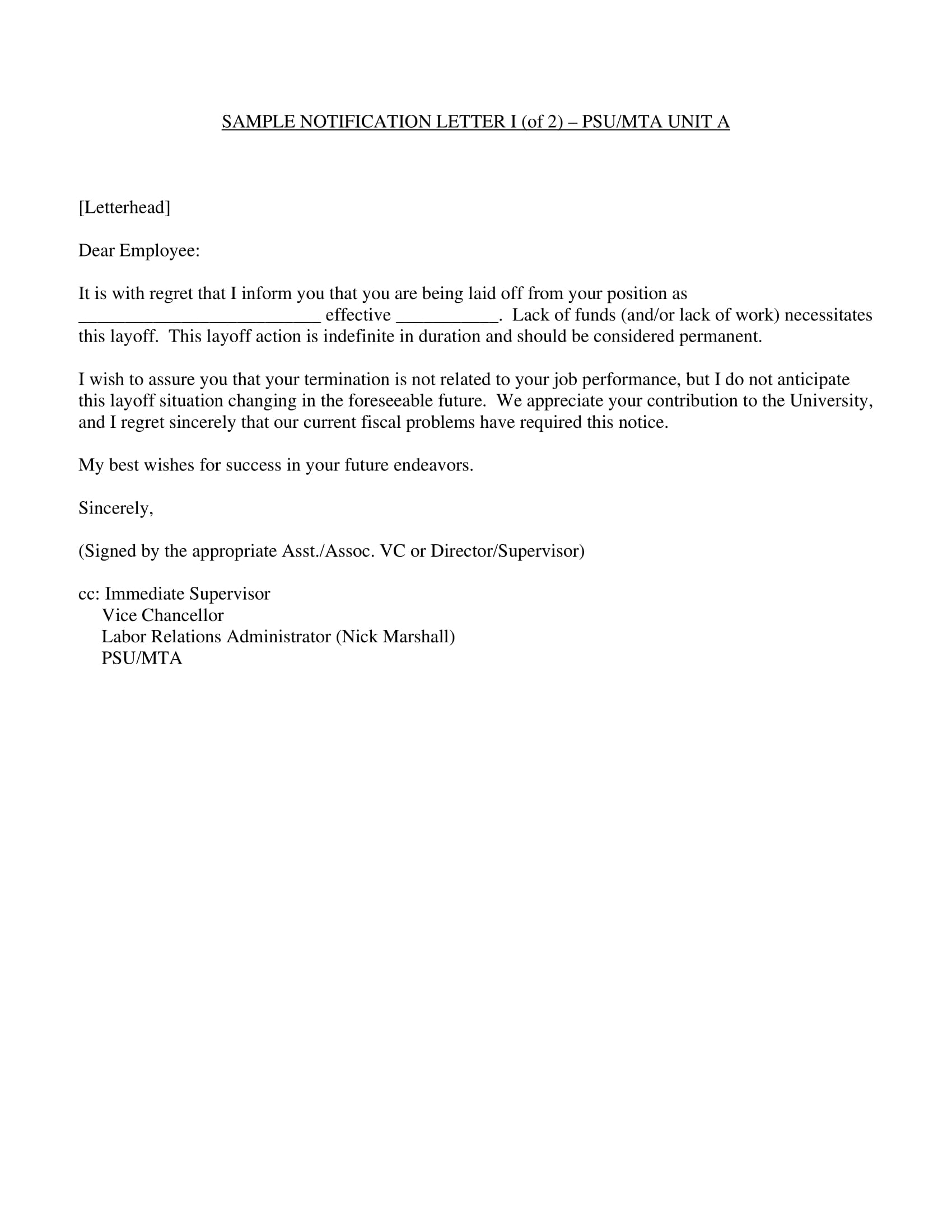
Sample Letter of Dismissal / Termination Template
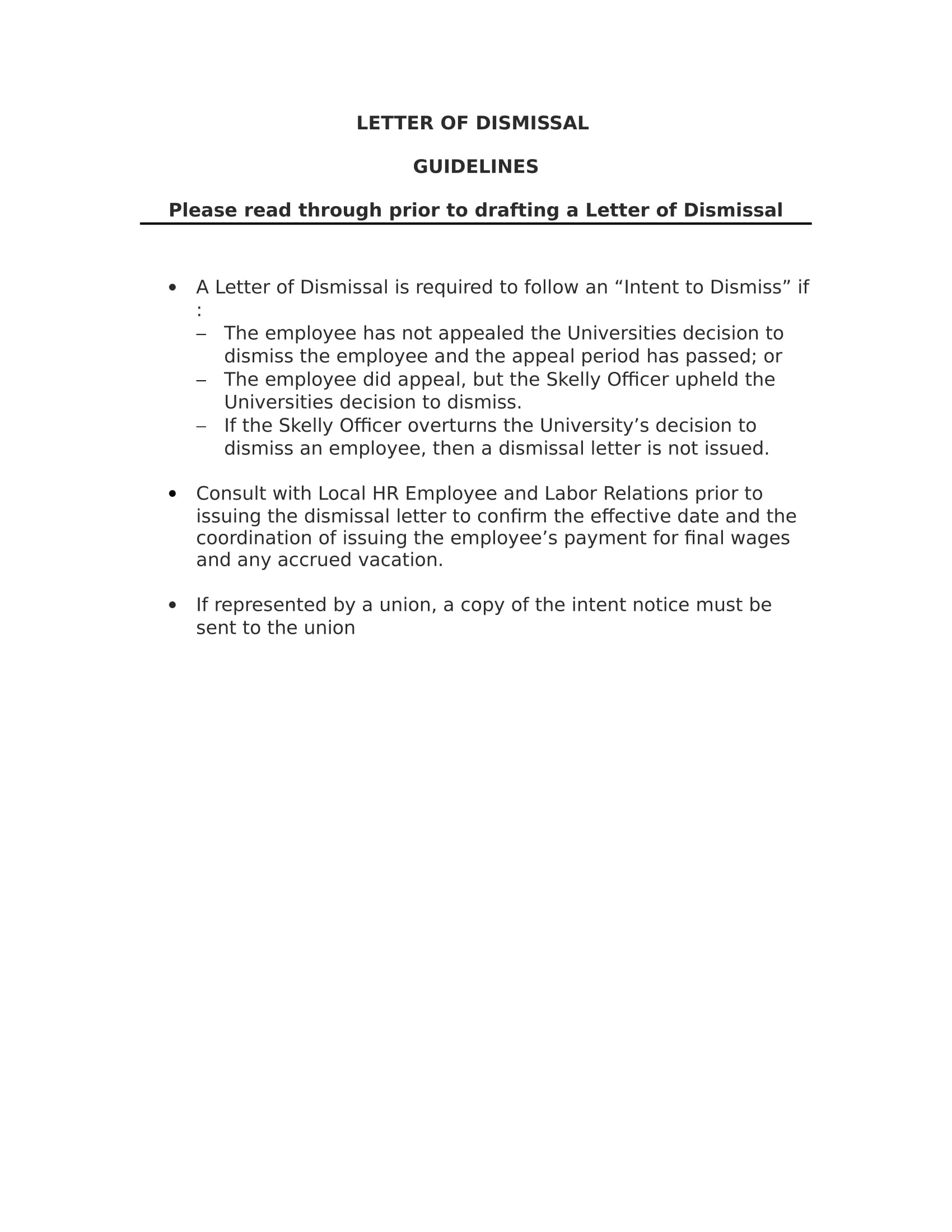
Letter of Termination of Employment (Redundancy) Template
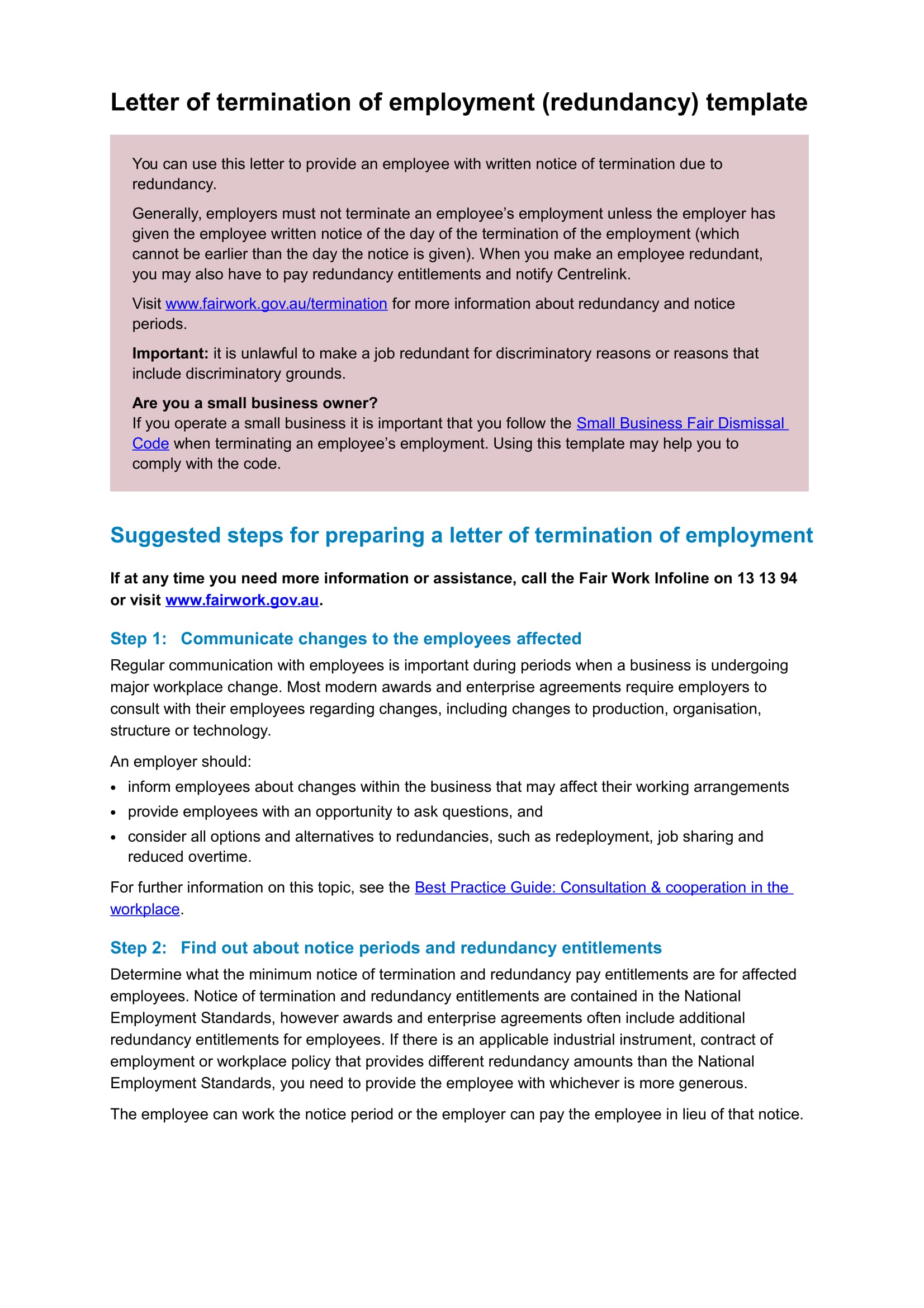
Termination of Employment Letter Template
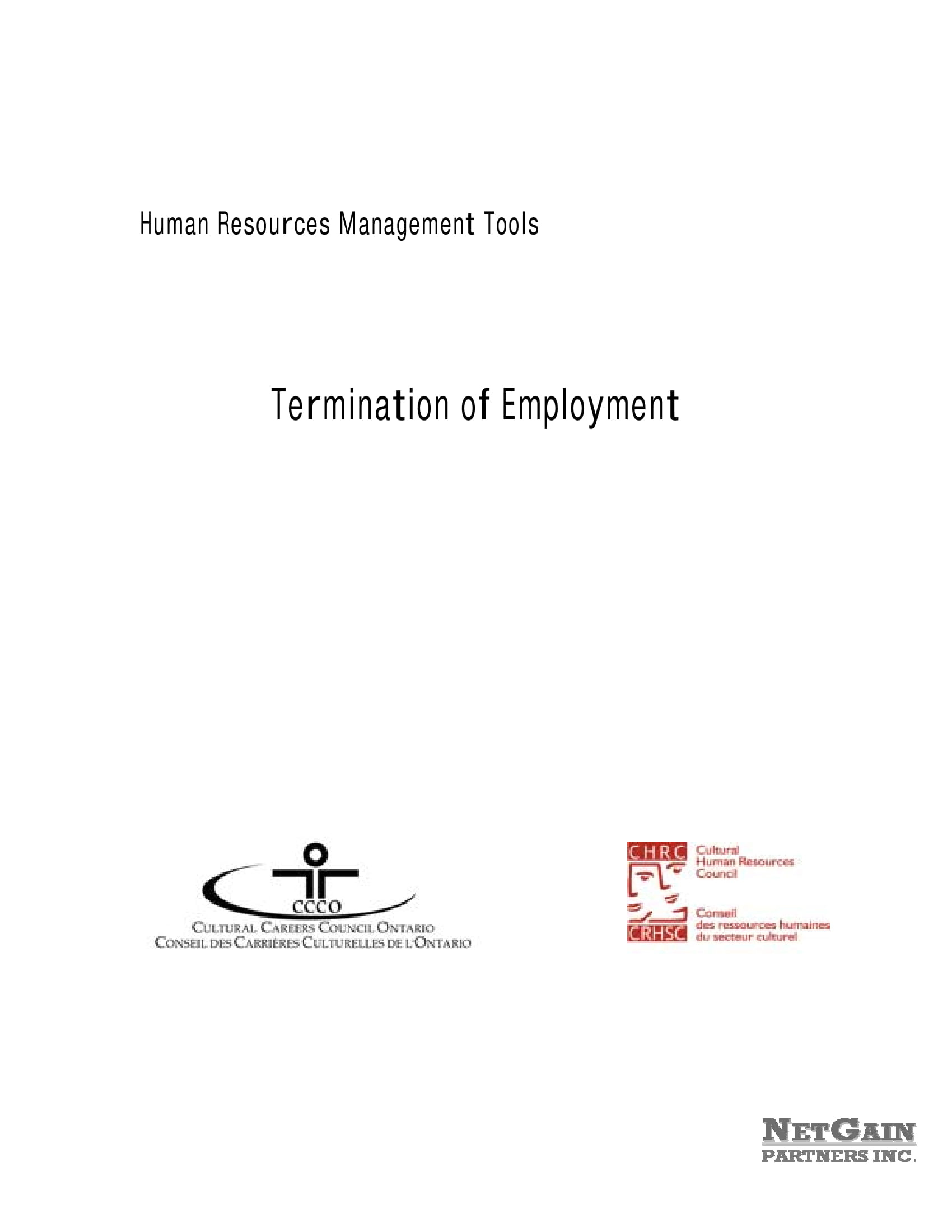
Why is a Termination Letter Necessary in the Processes of Employee Termination?
Employment termination is the process that is most likely to fall on the last part of an employer’s priorities. No matter what the reason of the termination is, it is hard to execute the decision both on the side of the employee and the employer. However, there are instances where the act of termination is what can provide the betterment of the business operations and the relationship of the company to its other stakeholders. Here are some of the reasons why a termination letter should always be present within the processes of terminating an employee:
- Creating an employee termination letter can protect the business from legal cases. It is important for companies to take note that the rights of the employees must still be considered even if they are already subjected for termination. This includes the confidentiality of the process so to not affect the moral of the employee. You may also see application letter examples & samples.
- Making an employee termination letter can help the management relay the specifics of the termination. This includes the date of the termination, the reason why the employee will be terminated and all the other details that the employee should be knowledgeable about in relation to the decision to terminate him or her.
- Writing an employee termination letter can precisely document the expected processes of the termination. This way, there will be a complete understanding when it comes to the responsibilities and tasks of both the business and the employee during the termination’s implementation. You may also like thank-you letter examples.
- Developing an employee termination letter can present a practical, fair and valid reason why the process of termination should push through. With this, it will be easier for the employee to accept the decision of the business especially if clarity of the termination processes and its purpose are observed in the letter. Just as how an appointment letter format affects the flow of discussion within an employee appointment letter, ensuring that the structure of the employee termination letter is well-planned can also help make the content of the document more understandable.
- Coming up with a comprehensive employee termination letter can already set the expectations of the employee. It will be hard for employees to accept the termination which is why employers have the responsibility to allow the employees to be ready and be prepared for it even within a short period of notice time. You may also check out email cover letter examples.
Things to Do Before Writing the Employee Termination Letter
Aside from business proposal cover letters and other corporate documents that are used in the improvement and development of the business, employers also need to focus on the creation of forms, letters and materials that can help address issues within the workplace. As an employer, you have to consider the impact of an employee termination to the business and its operations. With this, you have to be ready and prepared when developing an employee termination letter so you can ensure the protection of the rights of the business especially when legal cases arise after the termination.
Even if it is difficult to terminate an employee, you still have to do especially if the employment relationship is already affecting the company negatively. Here are some of the things that you need to do before writing the actual employee termination letter:
- Be specific with the purpose or reason of the termination. Keep in mind that terminations do not only occur due to the shortcomings of an employee. It can also be the result of a company’s cost cutting or downsizing measures. If you specify the reason why the employee needs to be terminated, then he or she can properly be aware of the scenario. You may also see business proposal letter examples.
- Properly identify the professional relationship of the employee with the business. You have to know the specific employment relationship that will be terminated so that you can ensure that the processes of termination will be legal.
- Create a checklist that can help you lay all the details that you would like to include in the employee termination letter. Having a checklist can help you be more organized and guided within the processes of the letter creation and development.
- Ensure that you will first make a draft the termination letter. This can make it easier for you to structure the flow of the letter discussion. By using a draft, you can also make sure that you will not forget any information that is essential to be known by the management and the employee to be terminated. You may also like reference letter examples.
- It is very important for you to review the employment contract of the employee that you will terminate. A lot of employment contract contains clauses for termination which should always be evaluated whenever the actual termination will already take place. This can ensure the business that no rights of the employee will be overlooked. You may also check out offer letter examples.
- Collect all the proofs and evidences that you have used to come up with the decision to terminate an employee. It is essential for these evidences to be presented to the employee so that he or she can be aware that there is no discrimination or subjectivity involved in the termination decision. As an example, you can use attendance record sheets, evaluation forms and copies of written warnings as your evidences if the employee will be terminated due to poor attendance, tardiness or absenteeism.
Tips in Making an Employee Termination Letter
Having a readily made employee termination letter can make it easier for the business to organize the processes of termination when it is already called for. A few of the tips that you can incorporate in the creation and development of your business’ employee termination letter include the following:
- Always seek for professional and legal advice when making and using an employee termination letter. You have to ensure that all the items presented in the document will not affect the credibility of the business. You may also see complaint letter examples & samples.
- Use references like the downloadable examples that we have listed here. It will be easier for you to create this document if you have letter templates and examples to refer to.
- Review the content and evaluate the format of the document before using it. Proofreading an employee termination letter can help you change necessary items to further improve the document. You may also like two weeks notice letter examples & samples.
- Update employee termination letter templates from time to time. Since there are different reasons that can cause termination and there are also a variety of ways on how employees set regulations about this matter, you have to make sure that the specific employee termination letter that you are using is appropriate for the current transaction of termination that you are dealing with. You may also check out appointment letter examples & samples.
If this is your first time to create an employee termination letter, using our downloadable examples and templates can help you a lot. Make sure to be keen when observing the content of the references that you will use so you can change items and information that can make your final document fit and supply the needs and regulations of your business in relation to employee termination. You might be interested in resignation letter examples.
Drafting an employee termination letter requires a balance of clarity, professionalism, and adherence to legal standards. It’s essential to communicate the reasons for termination and any relevant details about severance or final paychecks clearly and concisely. Ensuring that the letter is legally compliant and respectful can help mitigate potential issues and maintain a professional relationship with the departing employee.
For additional guidance on employment termination, the Minnesota Department of Labor and Industry provides useful information. Furthermore, for sample termination letters and legal forms, Priori Legal offers a range of resources that can be tailored to specific needs.
Best Practices for Writing a Termination Letter
Writing a termination letter is a critical task that requires sensitivity, adherence to legal standards, and clarity. Here are some best practices to ensure the process is conducted professionally and respectfully.
Be Clear and Concise
Start the letter with a clear statement of its purpose: to inform the employee of their termination. Avoid using ambiguous language that might confuse the employee about their employment status.
Maintain Professionalism and Respect
Even though the letter communicates the end of the employment relationship, it’s important to maintain a respectful and professional tone throughout. This approach helps preserve the dignity of the employee during a difficult time.
Provide a Reason for Termination
It’s crucial to include a brief explanation for the termination decision. This should be factual and neutral, avoiding any language that could be perceived as accusatory or personal.
Detail Any Severance Package or Final Pay
Clearly outline any severance pay, final paycheck details, and compensation for unused leave. Providing this information upfront can help reduce uncertainty and questions from the employee.
Include Instructions for Returning Company Property
If the employee needs to return any company property, specify what needs to be returned, how, and by when. This helps ensure a smooth transition and prevents any confusion regarding company assets.
Address Benefits and Insurance
Explain how the termination affects the employee’s benefits, including health insurance, and provide information on COBRA or any other benefits continuation options available.
Offer Support for the Transition
If applicable, mention any outplacement services or other support the company is providing to help the employee transition to new employment opportunities.
Remind of Legal Obligations
If the employee has signed any confidentiality agreements or non-compete clauses, remind them of these ongoing obligations in a manner that is informative, not threatening.
Provide a Point of Contact
Include the name and contact information of a company representative (usually from HR) whom the employee can contact if they have questions or need further clarification.
Express Appreciation
Acknowledge the employee’s contributions to the company and wish them well in their future endeavors. This can help end the employment relationship on a positive note.
Ensure Legal Compliance
Review the termination letter to ensure it complies with all relevant employment laws and regulations. Consider having a legal professional review the letter to prevent any potential legal issues.
Keep a Copy for Records
Finally, make sure to keep a signed copy of the termination letter in the employee’s personnel file for future reference.
FAQs
What Do You Say to Terminate an Employee?
When terminating an employee, it’s crucial to be clear, concise, and respectful. Say, “After careful consideration, we’ve decided to end your employment with us, effective [date]. This decision is final. We appreciate your contributions and wish you the best in your future endeavors.”
How Do You Write a Letter of Dismissal for an Employee?
A letter of dismissal should be formal and include the termination date, reason for dismissal, any severance package details, and instructions for returning company property. It should be respectful, providing necessary information without unnecessary detail.
How Do You Politely Terminate an Employee?
Politely terminating an employee involves a respectful conversation where you clearly explain the decision, without attributing blame or getting personal. Offer support for their transition, such as outplacement services, and express gratitude for their contributions to the company.


